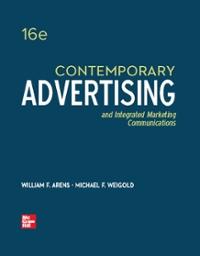
Match the Key terms in Column "A" with the definitions in Column "B" by writing the block (upper) case letter of your choiceunder column "A" and match the definitions in column "B" with the meanings or examples or real world applications in column "C"by writing thesmall (lower) case letter of your choice under column "B".(Note: # 9 -14 are from Appendix C).
Thank you very much.
Chapter 7 or 20 Consumer Choice & Appendix "C" Pre-Class and In- Class Activities Packet Name/I.D. Number: Section: Date: Part 2. Matching: Match the Key terms in Column "A" with the definitions in Column "B" by writing the block (upper) case letter of your choice under column "A" and match the definitions in column "B" with the meanings or examples or real world applications in column "C" by writing the small (lower) case letter of your choice under column "B". (Note: # 9 -14 are from Appendix C). Column "A" Column "B" Column "C" 1. Diamond-Water Paradox A. The total satisfaction a person receives from consuming a particular a. The optimal (most efficient ) bundle of goods that quantity of a good. would generate maximum level of satisfaction for a 2. Utility B. Comparing the utility one person receives from a good, service, or activity given level of income & prices of goods. 3. Util with the utility another person receives from the same good, service, or b. If consuming fish is better than chicken & chicken activity. is better than steak then fish is preferred to steak. 4. Total Utility C. The additional utility a person receives from consuming an additional unit C. A graph that contains a set of indifference curves of a good. that represent different levels of satisfactions. 5. Marginal Utility D. The equilibrium that occurs when the consumer has spent all income and d. Measures the rate at which the consumer is willing the marginal utilities per dollar spent on each good purchased are equal: to substitute one product for the other & maintain the 6. Law of Diminishing MUA /PA = MUB / PB = ... = MUz / Pz, where the letters A-Z represent all the same level of satisfaction. goods a person buys. e. A curve that shows the combination of two goods Marginal Utility E. The marginal utility gained by consuming equal successive units of a good that generate equal levels of satisfactions. - will decline as the amount consumed increases. 7. Interpersonal Utility f. The comparison between the levels of satisfactions F. An artificial construct used to measure utility. generated between two consumers after both of Comparison G. The observation that things with the greatest value in use sometimes have them consumed the same product little value in exchange and things with little value in use sometimes have the g. The limited amount of money available to a 8. Consumer Equilibrium greatest value in exchange. consumer that can be spent on goods and services H. A measure of the satisfaction, happiness, or benefit that results from the given their prices. 9. Budget Constraint consumption of a good. h. The additional satisfaction we get from the 10. Indifference Set I. The amount of one good an individual is willing to give up to obtain an consumption of successive units of a product in one additional unit of another good and maintain equal total utility. seat is subject to diminishing returns. 11. Indifference Curve J. A map that represents a number of indifference curves for a given i. A pair of goods that give the consumer equal levels individual with reference to two goods. of satisfaction. 12. Marginal Rate of K. The principle whereby if A is preferred to B, & B is preferred to C, then A is J. The extra benefits generated from the consumption preferred to C. of an extra unit of a product Substitution L. All the combinations, or bundles, of two goods a person can purchase, K. The sum of all the benefit s that consumers get given a certain money income and prices for the two goods from the consumption of a product. 13. Indifference Curve Map M. A group of bundles of two goods that give an individual equal total utility. I. The benefits or use associated with a product 14. Transitivity N. The curve that represents an indifference set and that shows all the M. The most important things in life come cheap or free bundles of two goods giving an individual equal total utility. while the less important things are expensive. 3 n. The scale to measure the amount of benefits








